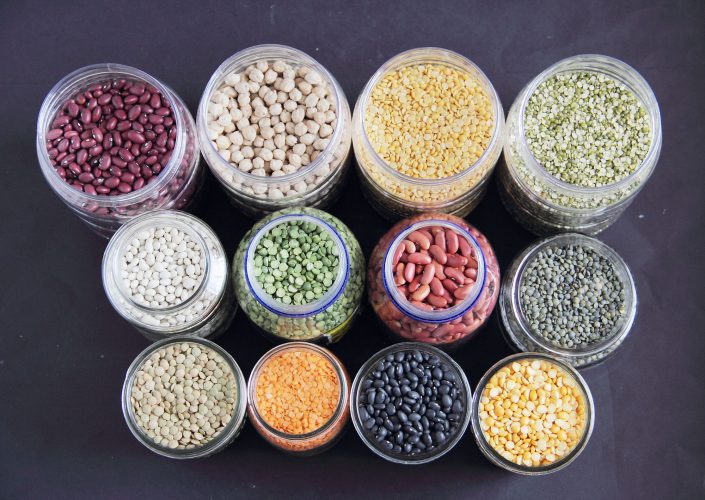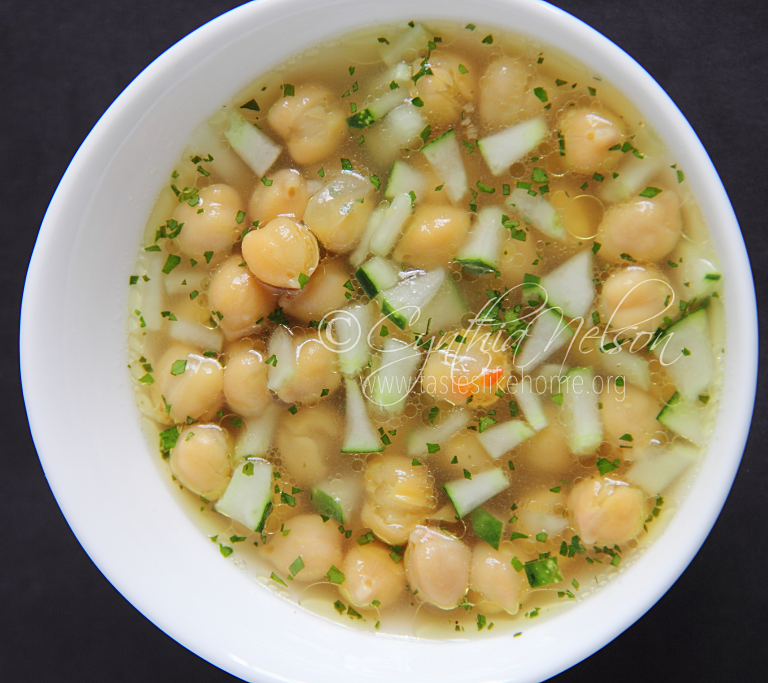What’s Cooking is a series in which I address questions you may have about food and cooking but are too shy to ask.
Last week, I wrote about stewed black beans and adapting by using a variety of pulses and legumes in place of the more familiar ones for certain dishes. A concern expressed by people is the flatulence/gas caused by the consumption of peas and beans. Several years ago I had written about how to avoid this issue and decided to revisit it today.

Peas and beans, especially those of the dried variety, are an excellent source of vitamins, fibre, and protein. They contain other nutrients too and are a highly recommended food source. As I said above, many people shy away from eating these nutrient-dense legumes because they cause gas. The passing of a certain amount of gas every day is a normal and natural part of the digestive process, but certain foods cause some people to produce more gas than other foods; chief among them are peas and beans.
Peas and beans cause gas because they contain a particular sugar that our bodies cannot break down. This type of sugar, oligosaccharides, makes its way along the digestive track to the large intestine, intact and undigested. The bacteria that lives in the large intestine then breaks down the oligosaccharides; this process of breaking down the sugar is what produces the gas.
Here in the Caribbean we use a lot of legumes in our cuisine and I believe that many home cooks have worked out ways to remove much of the gas from the peas and beans, before and during cooking. However, this edition of What’s Cooking seeks to offer ways in which the novice cook can address this issue.
SOAKING
It is important that dried peas and beans be given an adequate amount of water and time to fully rehydrate. Therefore, you will find most recipes using dried legumes instruct that the soaking takes place overnight. Some legumes rehydrate quicker than others so the time will vary, but a 6 to 8-hour soaking is good enough; longer is fine too. I often end up soaking my peas and beans for longer because I am not ready to cook them first thing in the early morning. But. I do drain off the liquid in which they were soaking overnight, give the peas/beans a rinse and then soak with fresh water.
The reason for soaking peas/beans is to reduce cooking time, improve the texture of the cooked peas/beans and to make them more easily digestible. There are some legumes that do not need soaking because they are quick cooking, such as red, brown and black lentils.
Peas/beans such as chickpeas (channa), split peas, black eye peas, black beans, and kidney beans (among others) start giving off their gas before the cooking process begins. You can see it because there would be froth/foam on top of the water and if you look carefully, you can see tiny bubbles of gas shooting up to the surface from the soaked peas/beans settled at the bottom. This is the first step to de-gassing the legumes. Pour off the water, rinse thoroughly in clean water and then soak in fresh water. Before cooking, drain off the water again, rinse, and then add the peas/beans to the pot based on your recipe.
COOKING
Once in the pot and before coming to a boil, you will notice a thick head of froth/foam sitting atop the cooking liquid, take a large pot spoon and scoop off the foam until all is gone. You may have to repeat this process as the peas/beans boil but there would only be a tiny fraction of that initial large release of gas. The removing of the froth/foam as the peas/beans come to a boil is the second stage of de-gassing legumes. Remember these two important processes the next time you are making a legume-centred dish such as boil ‘n fry channa, dhal, stewed peas or baked beans. It is also important to de-gas, particularly in the soaking process, even when making dishes like Cook-up Rice, Rice and Peas or Pelau.
If you are using a pressure cooker to cook your legumes, let them come up to a boil to remove the foam/froth before covering and closing the pressure cooker.
Legumes are not the only foods that cause excess gas, broccoli, cauliflower, Brussels sprouts, apples, potatoes, and pasta also cause gas. For example, when boiling potatoes, you will notice that they give off gas with the foam that forms atop the surface of the boiling liquid. De-gas your potatoes just as you would the legumes by scooping off the froth/foam.
Cynthia











